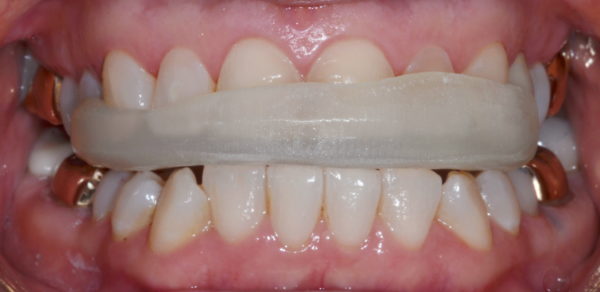
“It is very important with today’s challenges to various dental techniques to know where you are, […] where you are going, and how you can accomplish getting there before you initiate an irreversible procedure.” — Dr. Peter A. Neff, D.D.S. [Cranio. 1993 Apr; 11(2):126-36; discussion 140]
In this discussion, Dr. Neff goes on to say “I support the development of an anterior guidance with posterior disclusion. I recommend the use of an occlusal deprogramming appliance before any occlusal adjustments are made. By keeping the procedure reversible prior to initiating any irreversible process reduces the amount and frequency of occlusal equilibration as well as the length of the overall treatment program.”
Dr. Neff refers to the static and the dynamic nature of the words occlusion, occlude, and disocclusion. Since 1972, the inventor of the deprogrammer has advocated a protocol that deprograms the system, lets the condyles reposition themselves, makes precision adjustments to the occlusal planes, and lets patients reprogram their system in function. The process is repeated until all signs and symptoms have disappeared and required dentistry is completed.
As you can see in the pictures, an anterior splint was fabricated chairside using Triad to separate the mandible from the upper occlusal plane. The deprogramming concept consists of decoupling dual condylar guidance from existing anterior guidance when a patient sleeps. Much like a NTI or a well-balanced full upper or lower splint, the device is designed to turn down muscle triggers and seat the two condyles away from inflamed lateral ligaments.
After eight to ten nights of use patients return to the practice (usually in the morning) for a repeat comprehensive exam and a new force distribution cycle scan. In this example, the patient reported an absence of headaches, reduced ear symptoms, and decreased neck stiffness at her follow-up appointment. She also reported having slept through the night for the first time in a long time. Compare the before and after MIP/MFP frames and notice the differences in force distribution.
![]()
